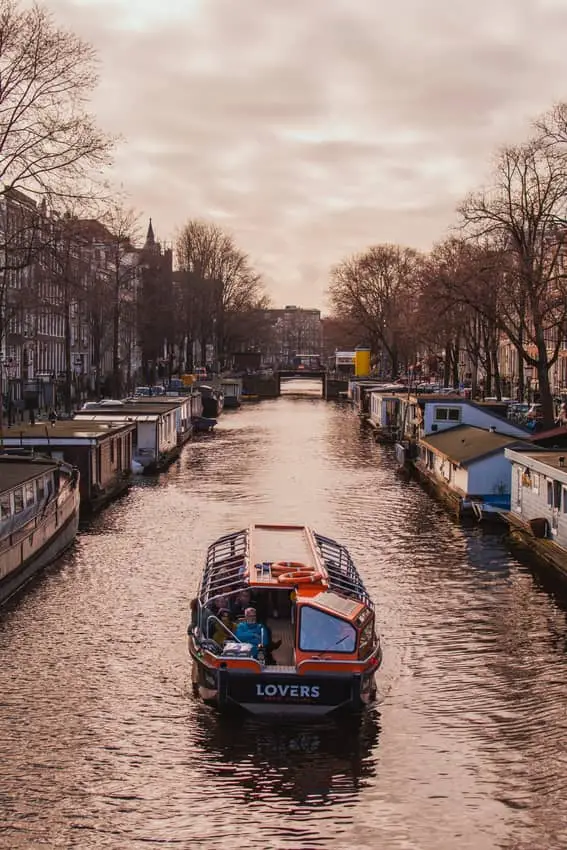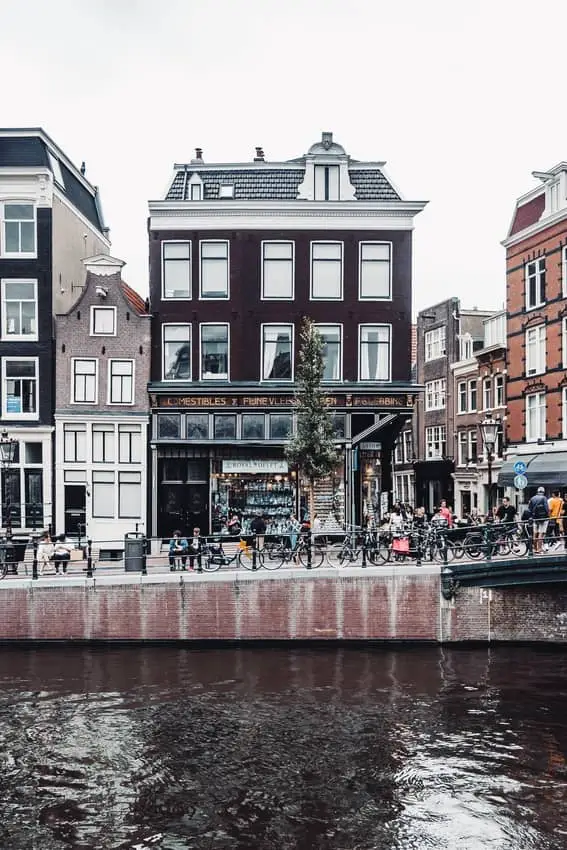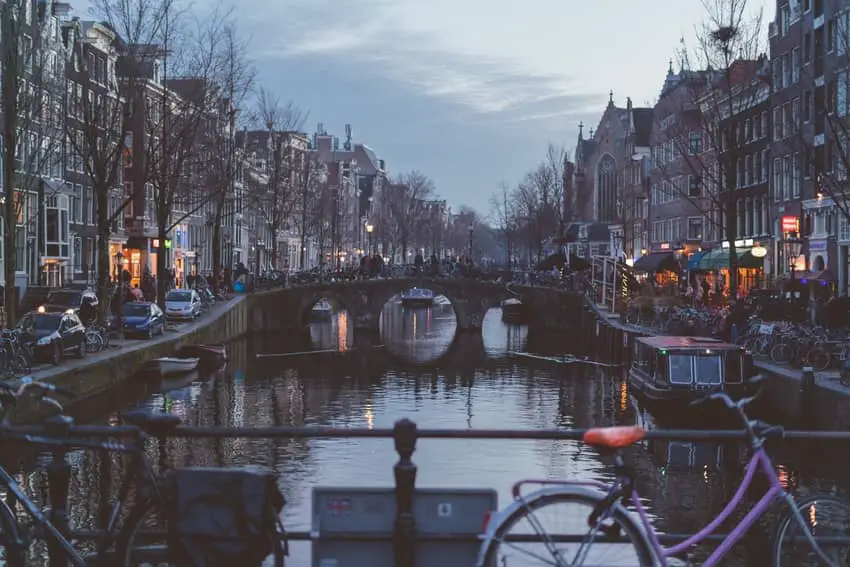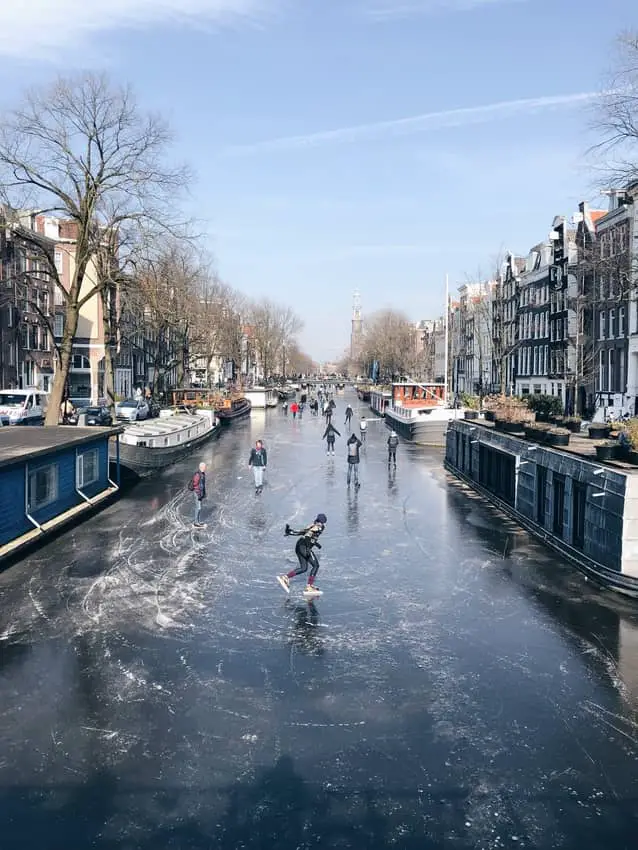Amsterdam thanks to its architecture, canals, and bridges is one of the most beautiful cities in the world. I haven’t been everywhere but personally, it’s my favorite city. I love its multiculturalism and possibilities. I like cycling culture and riding my bike along Dutch canals. There is more than 100 km of canals. But why are there so many canals in Amsterdam? People ask me very often about this. The answer is very easy but we need a little insight into the history of Amsterdam.
In the 16th century, a harbor in Amsterdam was full of sand. Because of that traders had to anchor their ships 2km away from the city and bring their goods on small boats to the city. Canals were built to allow ships to come closer to the city center and unload their cargo.
In this article, you’ll learn some interesting facts about Amsterdam canals and Dutch capital itself. I will share some information and my perspective on this beautiful city. Enjoy the article and if you have any question, do not hesitate to contact me for any further information.

How Many Canals Are There in Amsterdam?
There are 165 canals in Amsterdam with a total length of more than 100 km. Amsterdam is called a “Venice of the North” and there is a reason for that. There are more than 1750 bridges. In fact, it’s more than in Venice. There are 3 major canals in Amsterdam called: Herengracht, Prinsengracht, and Keizersgracht. The area surrounding these canals is breathtaking and a must-see for anyone visiting the capital of the Netherlands. They were all built in the 17th century during the Dutch Golden Age and they surround the city in the form of a belt. Canals I mentioned above are actually a part of UNESCO Heritage called The Canal Belt. The canal is on average 2,5 meter deep. Dutch make jokes that canals are 3 meters deep, 1 meter of water, 1 meter of mud and 1 meter of bikes.
A Short History Of Amsterdam Canals
In the middle of the 17th century, they have built three main canals: Herengracht, Prinsengracht, and Keizersgracht.
They start just next to the central station and they end in Ij Bay. This was since the very beginning a residential area. The forth canal Singel had a defensive function and also it was meant to be a water management canal. Later on, it became a residential area. The closeby Jordaan canals had a transport function. They used to transport goods in these parallel canals, for example, beer.
Kanaal, singel, vaart, gracht
You may be confused when it comes to canals names. When something is called kanaal, singel, vaart or gracht it’s basically a canal. The difference in these names come from the specific function of these canals in the past. For example, singel was a canal which had a defensive function.
Dutch Canals Nowadays
Canals are no longer used for transportation purposes and this was their main function in the past. Today canals are the heritage of the past. They became a beautiful part of the Dutch landscape. Canals are mostly used for recreational purposes. You can go for a canal cruise, or enjoy fishing. There are also more than 2500 houseboats anchored along the canals in Amsterdam. Here you can read another article about houseboats –> Link
It’s also important to mention that canals still play an important role in water control. Water control in the Netherlands is super professional. Imagine that Schiphol airport, the biggest airport in Holland and one of the biggest in the world is placed 4 meters below the sea level.
Can You Swim in Canals in Amsterdam?
Swimming in canals is forbidden within the city of Amsterdam. If you want to try it, I would suggest you think twice. The water in canals isn’t as clean as you would like it to be. I can ensure you that there are many lakes and much cleaner canals out of the city. This may be surprising but most of the canals don’t even have stairs so if you jump in the canal I have no idea how you come out of the water. Often the wall of the canal is very high and there is no way to climb. Be aware that many people drown each year in canals of Amsterdam. Most of the time it’s because they get drunk and fall into the water.

Is Amsterdam Under Sea Level?
Some part of Amsterdam is as much as 4 meters below the sea level, but others are 2 meters above the sea level. The lowest area in the Netherlands is 6 meters below sea level. No worries, Duch have a very advanced system of water management. Everything is under water… hmm… I mean under control 🙂
Go For a Canal Cruise
The city of Amsterdam is breathtaking and a canal cruise is one of the best experiences you can have in this city. There are many companies organizing that kind of tours. There are some budget cruises that are totally fine, but you can also find some fancy ones. Go for any cruise and see Amsterdam from a water perspective.
Another thing I can recommend is to rent a bike. Amsterdam is quite a big city and it’s amazing to just walk around, get lost and discover it on your own pace. Walking, unfortunately, is to slow. I suggest you rent a bike. I cycle at least 5 days a week in Amsterdam and I can’t get enough. I smile like a child and just enjoy a bike ride more than anything else in the world. Be happy with little things!
Where is The Famous Canal in Amstedam?
You’ve seen photos of some beautiful canals and now you want to take some selfies. Most beautiful canals in Amsterdam are situated in the canal ring and in Jordaan district. They have a beginning on the left side of Amsterdam Centraal station. From there they go all the way around the city of Amsterdam. It’s called a Canal Belt. The best way to see the canal belt is to rent a bike or go for a canal cruise.

On the photo above there is a famous canal Prinsengracht. This is one of my favorites places in the city. All the way along the canal are little shops and cafes. It’s a perfect spot for a coffee. When I want to do some writing this is an area of my choice, very inspiring.
Do Bikes End Up in Canals?
Yes, they do. In fact, a big amount of them drowns in canals. On a yearly basis, more than 10 000 bikes are pulled out from Amsterdam canals. That’s pretty a good number. There are some special boats which belong to the city of Amsterdam and they pull bikes out of the water. They must do this because canals are still in frequent use and waterways have to be clear. In most places, you won’t even find any barriers or rails so it’s not very difficult to throw a bike in the canal.
Canal Belt Was Meant to Be a Canal Circle Around Amsterdam
Yes, this is true and at first, canal belt was meant to be a canal circle. The plan was to build canals all the way around Amsterdam to enhance trade in the city. Unfortunately, the market isn’t growing forever and after the Golden Age, there was a recession and Dutch couldn’t finish their plan of building canals all the way around the city. Because of that on the east side of Amsterdam, they started planting some trees, creating parks and that’s how Plantage was built. It’s a very nice part of the city. In this area, you find a Hortus Botanicus and Artis Zoo.
Is There a Fish in Amsterdam Canal?
You may be surprised but Amsterdam waters are great for fishing. You can find here all kind of fishes. Because of access to the salt water coming from Noord Sea, there are some wild predator fish such as zander or perch. You can also find there a pike. Last year I caught an 80 cm long pike in this area. There are also some lazy fish such as a beam or roach.
Is Water in Amsterdam Canals Salty?
There is both, salt and fresh water in Amsterdam canals. Amsterdam has a direct connection to the North Sea and the salt water comes all the way from Ijmuiden. On the other side, there is a river Rhine which provides fresh water. It’s funny because in Amsterdam canals you can find both salt and fresh fish.
Ice Skate on Frozen Canal in Amsetrdam?

When temperatures in the winter drop very low, canals in Amsterdam freeze. It must be very cold and then a municipality puts there some signs that it’s safe and you can skate. Imagine how fun it is to skate on frozen canals, as they are over 100 km long. You can get anywhere on your skates.